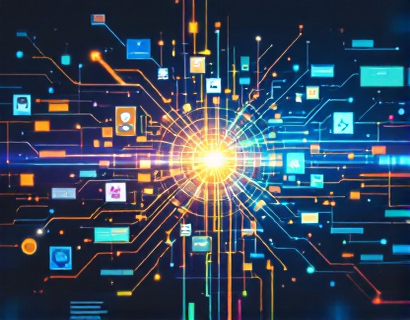Unlocking the Full Potential of ISO Standard Emojis: A Comprehensive Guide
In the digital age, effective communication transcends mere words. Emojis have become an integral part of our online interactions, serving as a universal language that bridges gaps and adds depth to our messages. The International Organization for Standardization (ISO) has played a pivotal role in standardizing these digital symbols, ensuring consistency and clarity across various platforms. This guide delves into the world of ISO standard emojis, providing a detailed exploration of how to discover, use, and enhance your digital communication with these unique symbols.
Understanding ISO Standard Emojis
ISO standard emojis are a set of universally recognized digital symbols designed to convey emotions, objects, and concepts. These emojis are part of a larger effort to standardize the visual language used in digital communication. The ISO working group responsible for this standardization aims to create a consistent and accessible set of emojis that can be understood across different devices and platforms. This standardization is crucial for ensuring that the meaning of an emoji remains the same, regardless of where it is used.
History and Evolution of Emojis
The concept of using pictures to convey messages dates back to ancient times, but the modern emoji as we know it began in the late 1990s with the introduction of emoticons on Japanese mobile phones. These early emojis were limited and often platform-specific. The ISO standard emojis emerged in the early 2000s as part of a broader effort to create a universal set of symbols. Over the years, the number and variety of emojis have expanded significantly, reflecting a more diverse and inclusive world.
Benefits of Using ISO Standard Emojis
Using ISO standard emojis offers several advantages. Firstly, they enhance the clarity and emotional impact of digital messages. A well-placed emoji can convey a tone or feeling that words alone might miss. Secondly, standardization ensures that your messages are interpreted correctly by others, reducing misunderstandings. Lastly, the use of standardized emojis can make your communication more engaging and memorable, which is particularly valuable in a world where attention spans are shorter than ever.
Exploring the Range of ISO Standard Emojis
The ISO standard includes a wide array of emojis, categorized into various groups to make them easier to find and use. These categories include faces and emotions, food and drink, animals and nature, objects, symbols and activities, and more. Each category is further divided into subcategories, allowing for precise selection of the emoji that best fits the intended message. For instance, the "Faces and Emotions" category includes emojis for happiness, sadness, surprise, and many other emotions, each with subtle variations to express different shades of feeling.
Finding and Copying ISO Standard Emojis
With the vast number of emojis available, finding the exact one you need can be challenging. However, several tools and resources are designed to simplify this process. One such resource is a comprehensive online explorer that allows users to search, find, and copy ISO standard emojis with ease. This tool provides a user-friendly interface where you can browse through categories and subcategories, type in specific keywords, or even use a search bar to locate the emoji you need. Once you find the emoji, a simple copy function allows you to paste it directly into your message or document.
Another approach is to use built-in emoji pickers on various devices and platforms. Most modern smartphones and computers have an emoji keyboard or picker that includes a wide range of ISO standard emojis. These pickers often allow you to filter by category or use a search function to find specific symbols. For example, on a Android device, you can long-press the spacebar to access the emoji picker, while on an iOS device, you can use the emoji & symbols keyboard.
Best Practices for Using ISO Standard Emojis
To maximize the effectiveness of ISO standard emojis in your digital communication, consider the following best practices:
- Context is Key: Ensure that the emoji aligns with the context of your message. An emoji that works well in one situation may be misinterpreted in another.
- Use Sparingly: While emojis can add flavor to your messages, overusing them can dilute their impact. Use them to highlight key points or emotions rather than peppering your text with multiple emojis.
- Consider Your Audience: Be mindful of the cultural and personal associations that different emojis might have. What is humorous or appropriate in one culture may not be in another.
- Test for Clarity: Before sending a message with emojis, read it aloud or ask someone else to interpret it. This can help ensure that your intended message is clear.
Enhancing Digital Communication with Emojis
Emojis are not just decorative elements; they are powerful tools for enhancing digital communication. By using ISO standard emojis, you can add layers of meaning and emotion to your messages, making them more engaging and relatable. For instance, in professional settings, a well-placed emoji can soften a critical message or convey enthusiasm for a project. In personal communications, emojis can express feelings that might be difficult to articulate with words alone.
Moreover, the use of standardized emojis promotes inclusivity and accessibility. By ensuring that emojis are consistent across platforms, ISO standardization helps people with visual impairments or those using screen readers to better understand the content of digital messages. This inclusivity is a significant step towards creating a more accessible digital world.
Exploring Advanced Emoji Features
Beyond the basic set of ISO standard emojis, many platforms and devices offer advanced features to further enhance your digital communication. For example, some devices allow you to create custom emojis using your camera or drawing tools. These custom emojis can be particularly useful for representing specific concepts or personal symbols that resonate with you or your audience.
Another advanced feature is the use of emoji combinations, where two or more emojis are combined to create a new, more complex symbol. These combinations can add nuance and depth to your messages, allowing for more precise expression. For instance, combining a heart emoji with a red color can convey strong affection, while a heart with a speech bubble can represent sharing love or kind words.
Challenges and Considerations
While ISO standard emojis offer many benefits, there are also challenges and considerations to keep in mind. One common issue is the varying support for emojis across different platforms and devices. While most modern devices and platforms support the ISO standard, older devices or less common platforms may have limited or inconsistent support. This can lead to unexpected changes in how an emoji appears, potentially altering the intended message.
Another consideration is the potential for emojis to be misinterpreted, especially when used in professional or formal contexts. It's essential to be aware of the cultural and personal connotations of different emojis to avoid misunderstandings. Additionally, some emojis may carry different meanings in different regions or communities, so it's important to consider your audience when choosing which emojis to use.
Future Trends in Emoji Usage
The world of emojis is continually evolving, with new symbols and features being added regularly. One trend is the inclusion of more diverse and representative emojis, reflecting a broader range of cultures, genders, and identities. This trend towards inclusivity is likely to continue, making emojis even more relevant and relatable to a global audience.
Another exciting development is the integration of emojis with other forms of digital communication, such as augmented reality (AR) and virtual reality (VR). In AR and VR environments, emojis can take on new dimensions, allowing for more immersive and interactive experiences. For example, an emoji could trigger a virtual animation or sound effect, enhancing the overall user experience.
Conclusion
ISO standard emojis are more than just digital symbols; they are a powerful tool for enhancing digital communication. By understanding and effectively using these standardized emojis, you can add depth, clarity, and emotion to your messages. Whether you're a digital communication enthusiast or simply looking to improve your online interactions, mastering the use of ISO standard emojis is a valuable skill in the modern digital landscape.









































